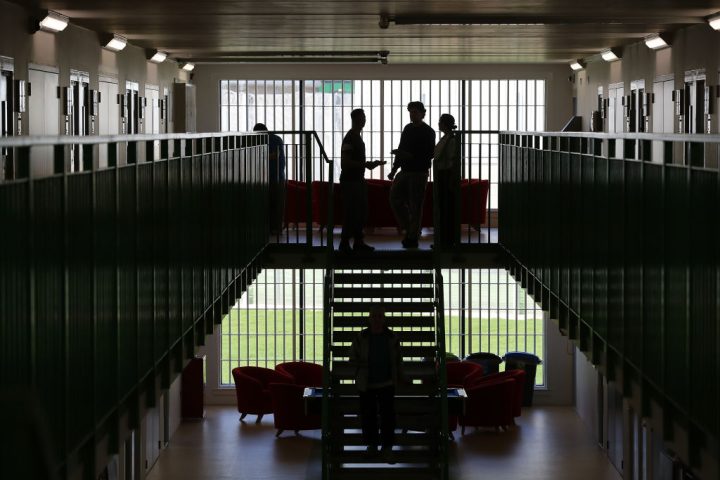Aldous Huxley’s dystopian best seller Brave New World, published back in 1934, envisaged a society where stability was enforced by a numbing drug called ‘soma’. Constant consumption of soma, mandated by the state, dulled the senses, vanished despair and discouraged rebellion.
I was reminded of this by comments made by some of the Times‘ new crime commissioners as they launch a year-long project to fix our broken criminal justice system. They were speculating as to why we weren’t seeing a national jail insurrection similar to what happened here in the spring of 1990 when multiple prisons across the country exploded in violent disorder. After all, many of the precursors that existed then are now present once again: severe overcrowding, demoralised and overwhelmed staff, endemic brutality and squalor.
In the meantime, offenders will continue to go into our prisons clean and come out addicted
But several things are different. Prisons have always had illicit drugs problems that the authorities have struggled to deal with. This battle is now all but lost but it has a perverse benefit. Drugs are now so freely available across our jails that prisoners can to a large extent self-medicate away the reality of the awful conditions they and the staff who watch over them are locked up in. Moreover, the illicit drugs trade, much of which is controlled by organised crime gangs, is so great that a determined effort by the authorities to regain control would probably result in the sort of widespread disorder that ignited in the chapel in Strangeways prison 34 years ago.
The dominance of these gangs subverts the authority of the state and destroys the efficacy of jail rehabilitation. They turn prisons into violent contests for power and space with a literally captive market. Brutality is endemic, staff are frightened and there are too few of them to enforce the rules even if they wanted to.
But the lid is still on. This makes for a pretty awful Faustian pact between prison officials and gangsters: leave the drugs trade alone, despite the trail of ruin it causes and, in return, the outsourced Soma stops another national insurrection.
Of course, this ‘contract’ ignores the eye-watering human and financial cost of surrendered territory. We pour £8 billion a year into prisons where, if there’s any random testing done at all, up to 55 per cent of screened prisoners show up positive for drugs. Many are on powerful, hugely addictive and dangerous psychoactive substances that turn them into zombies and fuel depraved violence – often against staff. Prisoners controlling such a lucrative trade don’t want their supply lines compromised.
While there has been some improvement in drug detection equipment, this only works as a deterrent if there are people trained to operate it. Another Times investigation this year showed its undercover journalist in a uniformed role after a day’s training and no vetting, able to walk through the unattended screening portal at HMP Bedford into the heart of the prison. More worrying still is the opportunity here – perfectly rational – for crime gangs to use the chaos of hurried crisis recruitment to infiltrate uniformed prison ranks. No serious examination of drugs in prisons can ignore the impact of staff corruption, civilian and uniformed.
I often guess at the conversations that Justice Secretary Alex Chalk must have with prison service senior officials when yet another independent inspection reveals drugs rife in the places layers of bureaucracy were oblivious to. Imagine the scene: prisons inspectors at HMP Woodhill, a former high security prison holding very dangerous people including terrorists, report that 38 per cent of prisoners there test positive for drugs. The exasperated Lord Chancellor summons hapless mandarins and demands action this day.
Two responses emerge that are emblematic of a national problem. The first is ‘Action? What with?’ Newly recruited staff lack confidence and leadership backing to enforce even basic rules of civility, and there are far fewer of them per capita than when Strangeways went up. Back then, the average prison population was just around 35,000. Today it is north of 87,000.
The second response speaks to that Faustian pact I’ve mentioned earlier: ‘Assuming we were able to launch a major offensive against drug supply, how much disorder are you prepared to tolerate Secretary of State?’ A jail-based income stream with a tenfold markup on product compared with the outside and an estimated value of £100 million a year won’t dry up without a fight. If you interdict supply with no resources to follow through and no meaningful alternative for prisoner demand – workshops and education shut up, offending behaviour programmes stalled or ineffectual – there will be blood.
These are imagined exchanges but the reality is that, unlike 1990, when 20 other establishments erupted in rioting after Manchester’s prison, our primary state agencies do not have the capacity to take back control in prisons or deal with a violent reaction were a contagion to spread. In prisons, our mutual aid system for riot control officers in one establishment to support their neighbours in another is in an abject state: some prisons are unable to even muster any fully trained officers. The police, distracted by their own morale and resource difficulties, would be unable to support prison officers to the same degree. While no one would admit this, least of all our derelict and failing prison service boss class, there is a tacit agreement that not tackling illicit drugs and the grotesque harm they cause is now the lesser of two evils.
In the meantime, offenders will continue to go into our prisons clean and come out addicted. Rates of assault against staff caught in the middle of drugs turf wars will ensure new hires leave almost as fast as they can be recruited. The prison service press office will continue to pump out plainly delusional garbage on ‘zero tolerance for drugs’ that it can’t believe. The senior management of the prison service will continue to be more exercised by prisoner misgendering than order and control.
There is a plain truth at the heart of prison reform. Safety is completely foundational to everything else. Prisoner rehabilitation simply isn’t possible without staff and prisoners feeling safe. Illicit drugs are fundamentally corrosive to that safety. Without recognition of this underpinning truth, meaningful change will never happen.








Comments